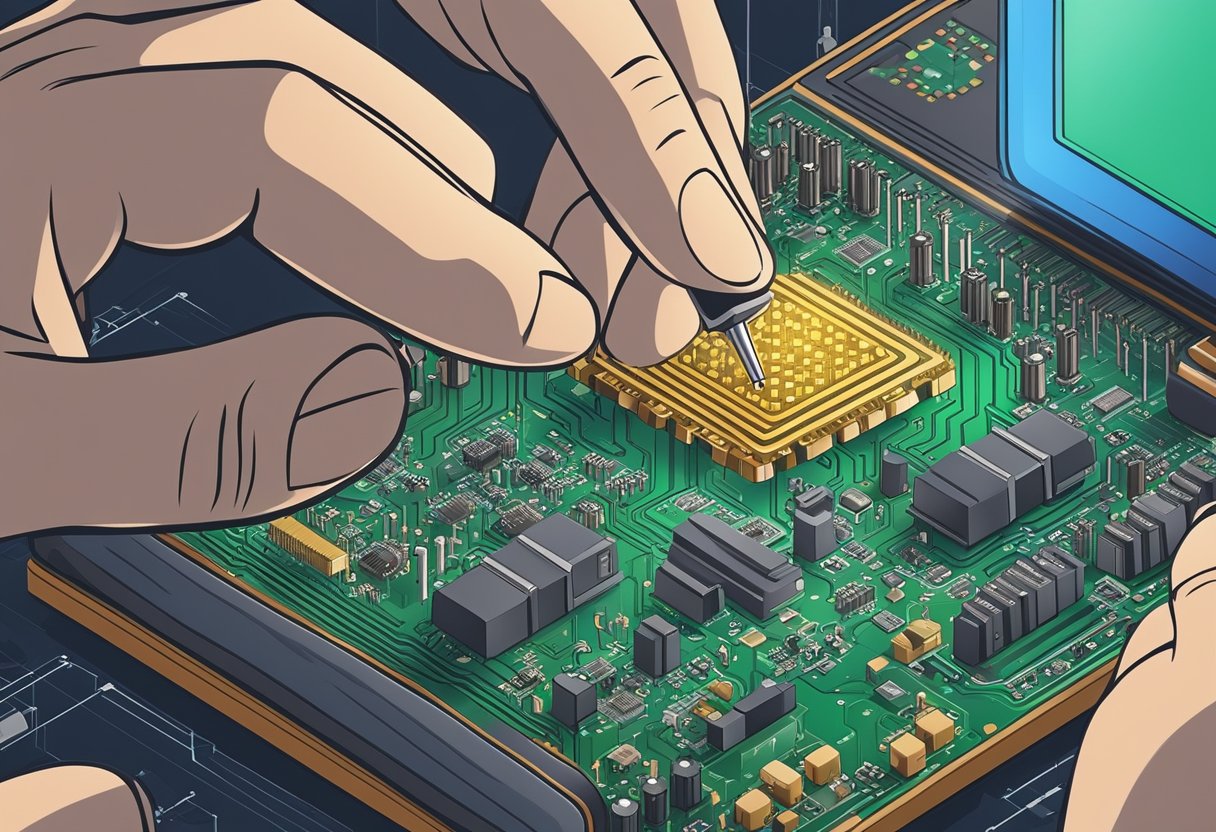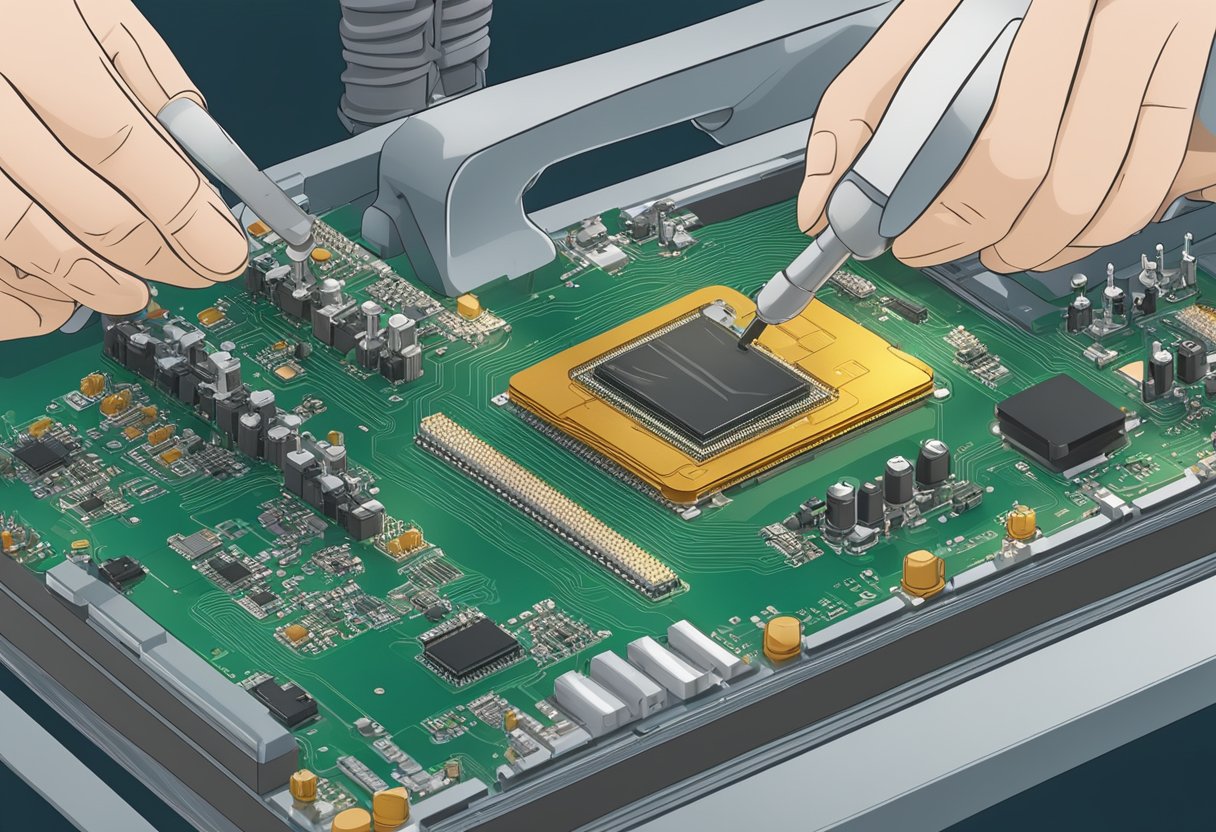PCB Assembly Quote: How to Get an Accurate Price for Your Project
PCB assembly quote is a crucial aspect of electronics manufacturing. It is the process of estimating the cost of assembling printed circuit boards (PCBs) for electronic devices. The quote includes various factors such as the cost of components, labor, and overhead expenses. Companies often request PCB assembly quotes from multiple vendors to compare prices and choose the most cost-effective option.

The PCB assembly quote process involves several steps. First, the manufacturer needs to provide a bill of materials (BOM) that lists all the components required for the PCB. The BOM includes the type and quantity of each component. The manufacturer also needs to provide the PCB design files, which include the layout and schematic diagrams. The PCB assembly vendor then reviews the BOM and design files to determine the cost of materials and labor required for assembly. Finally, the vendor provides a quote to the manufacturer, which includes the total cost and estimated delivery time.
Understanding PCB Assembly Quotes

When it comes to getting a PCB assembly quote, it can be overwhelming to understand all the components that go into the final price. In this section, we will break down the various factors that affect the cost of a PCB assembly quote.
Components of a PCB Assembly Quote
A PCB assembly quote typically includes the following components:
- PCB fabrication: This refers to the process of creating the physical PCB board that will house the electronic components.
- Component procurement: This involves purchasing the necessary electronic components to be placed on the PCB.
- PCB assembly: This is the process of placing and soldering the electronic components onto the PCB board.
- Testing and inspection: Once the PCB assembly is complete, the board must be tested and inspected to ensure it is functioning properly.
Each of these components can have a significant impact on the final cost of a PCB assembly quote. For example, the cost of component procurement can vary greatly depending on the specific components needed and their availability.
Factors Affecting Cost
There are several factors that can affect the cost of a PCB assembly quote. These include:
- Quantity: The larger the quantity of PCB assemblies needed, the lower the cost per unit is likely to be.
- Complexity: More complex PCB assemblies with more components and intricate designs will generally be more expensive to produce.
- Lead time: Rush orders or shorter lead times may result in additional fees.
- Quality requirements: If higher quality standards are required, such as for aerospace or medical applications, this can add to the cost.
It is important to communicate all of your requirements and specifications clearly to the PCB assembly provider to ensure an accurate quote. By understanding the various components and factors that affect the cost of a PCB assembly quote, you can make informed decisions and ensure you are getting the best value for your money.
How to Request a PCB Assembly Quote
When it comes to requesting a PCB assembly quote, it is important to provide the necessary information to ensure an accurate quote. This section will provide guidance on the information to provide and how to choose a PCB assembly service.
Information to Provide
When requesting a PCB assembly quote, it is important to provide the following information:
- Bill of Materials (BOM): A list of all the components needed for the assembly, including part numbers, quantities, and manufacturer names.
- Gerber files: These files contain the design layout of the PCB, including the placement of components, copper traces, and drill holes.
- Assembly drawings: These drawings provide additional information on the assembly process, including the location of components and any special instructions.
- Quantity: The number of PCBs needed for the assembly.
Providing this information upfront can help ensure a more accurate quote and reduce the need for revisions.
Choosing a PCB Assembly Service
When selecting a PCB assembly service, it is important to consider the following factors:
- Experience: Look for a service with experience in your industry and with similar projects to ensure they have the necessary expertise.
- Quality: Ensure the service has a quality control process in place to ensure the final product meets your standards.
- Cost: Compare quotes from multiple services to ensure you are getting a fair price for the assembly.
- Turnaround time: Consider the service’s turnaround time to ensure the assembly will be completed within your desired timeframe.
By considering these factors and providing the necessary information, you can ensure a successful PCB assembly project.
Analyzing and Comparing Quotes
When it comes to PCB assembly, obtaining quotes from different suppliers is an important step in the process of selecting the best option for your project. However, simply comparing the bottom-line cost is not enough to make an informed decision. It is important to evaluate the details of each quote and compare them strategically.
Evaluating Quote Details
The first step in analyzing quotes is to carefully review the details of each one. Some important factors to consider include lead time, minimum order quantity, and any additional fees or charges. It is also important to ensure that the quote includes all necessary services, such as testing and inspection.
One effective way to evaluate the details of each quote is to create a checklist of important factors and compare them side-by-side. This will help to ensure that all relevant information is taken into account and that the quotes are being evaluated objectively.
Cost Comparison Strategies
While cost is an important consideration, it should not be the only factor in selecting a PCB assembly supplier. In order to make an informed decision, it is important to compare costs strategically. This can be done by considering the total cost of ownership, rather than just the initial cost.
One effective strategy is to calculate the cost per unit, taking into account factors such as yield rates and the cost of any necessary rework or repairs. This will help to ensure that the true cost of each option is being compared.
Another strategy is to negotiate with suppliers to try to obtain a better price. This can be done by leveraging quotes from other suppliers or by offering to increase the order quantity in exchange for a lower price.
In conclusion, analyzing and comparing quotes is an important step in selecting the best PCB assembly supplier for your project. By carefully evaluating the details of each quote and comparing costs strategically, you can make an informed decision that will meet your project’s needs while staying within your budget.
Optimizing Your PCB Design for Cost-Efficiency
When it comes to PCB assembly, optimizing your design for cost-efficiency is crucial. By taking into account factors such as manufacturability and material selection, you can ensure that your PCB assembly quote is as cost-effective as possible.
Design for Manufacturability
Designing for manufacturability involves creating a PCB design that is easy to manufacture. This means taking into account factors such as component placement, trace routing, and board size. By designing a PCB that is easy to manufacture, you can reduce the time and cost associated with the assembly process.
One way to design for manufacturability is to use standard components and footprints. This makes it easier for the manufacturer to source the components and reduces the risk of errors during assembly. Additionally, keeping the trace routing simple and minimizing the number of vias can also reduce the cost of assembly.
Material Selection
Material selection is another important factor to consider when optimizing your PCB design for cost-efficiency. By selecting the right materials, you can reduce the cost of the PCB while still maintaining the necessary performance and reliability.
When selecting materials, it is important to consider factors such as the operating environment, required performance, and cost. For example, if the PCB will be exposed to high temperatures, it may be necessary to use materials with a high glass transition temperature.
Additionally, selecting materials with a lower dielectric constant can reduce the signal loss and improve the performance of the PCB. However, it is important to balance the performance requirements with the cost of the materials to ensure that the PCB assembly quote remains cost-effective.
By considering factors such as design for manufacturability and material selection, you can optimize your PCB design for cost-efficiency. This can help to reduce the cost of assembly while still maintaining the necessary performance and reliability.
Common Pitfalls in PCB Assembly Quotes
When it comes to PCB assembly quotes, there are a few common pitfalls that can catch customers off guard. Being aware of these pitfalls can help customers make more informed decisions and avoid unexpected costs and delays.
Hidden Costs
One of the most common pitfalls in PCB assembly quotes is hidden costs. These are costs that are not explicitly stated in the initial quote, but are added later on in the process. Some examples of hidden costs include:
- Tooling fees: These fees are charged for creating the tools necessary to manufacture the PCBs. They can be quite expensive and are often not included in the initial quote.
- Shipping costs: Depending on the location of the manufacturer and the customer, shipping costs can be significant. It’s important to clarify who is responsible for paying these costs before placing an order.
- Rush fees: If a customer needs their PCBs manufactured and delivered quickly, rush fees may apply. These fees can be quite high and are often not included in the initial quote.
To avoid hidden costs, customers should ask for a detailed breakdown of all costs associated with the PCB assembly process before placing an order. This will help ensure that there are no surprises later on.
Overlooking Turnaround Time
Another common pitfall in PCB assembly quotes is overlooking turnaround time. Turnaround time refers to the amount of time it takes for the manufacturer to complete the PCB assembly process and deliver the finished product to the customer.
Customers who overlook turnaround time may find themselves in a rush to receive their PCBs and may be hit with rush fees or other additional costs. To avoid this, customers should ask for an estimated turnaround time before placing an order and make sure that it fits within their timeline.
In conclusion, being aware of hidden costs and turnaround time can help customers avoid common pitfalls in PCB assembly quotes. By asking for a detailed breakdown of costs and estimated turnaround time, customers can make more informed decisions and avoid unexpected costs and delays.

